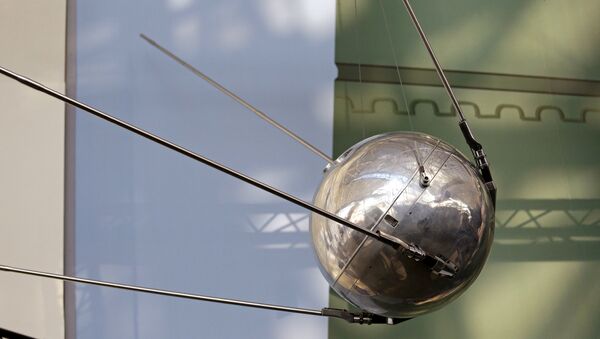'Prestige and International Recognition'
On October 4, 1957, Soviet engineers at the Baikonur Cosmodrome launched Sputnik (Russian word for "satellite") into orbit on a modified R-7 Semerka, the world's first intercontinental ballistic missile.
"US intelligence, the military and the administration of President Dwight D. Eisenhower not only were fully informed of Soviet planning to launch an earth satellite but also knew a Soviet satellite would probably achieve orbit no later than the end of 1957," the released report said.
"The nation that first successfully launches the earth satellite, and thereby introduces the age of space travel, will gain incalculable international prestige and recognition. Our scientific community as well as the nation would gain invaluable respect and confidence should our country be the first to launch the satellite," the letter read.
Dulles also underscored that the successful launch of the first man-made satellite would have a significant "psychological impact" on US allies, neutral countries and, what is more important, "Communist-controlled countries" in the context of the Cold War.
However, several US efforts to launch a satellite failed at the time. The first American satellite, Explorer 1, was fired into orbit only four months after the Soviet launch, on February 1, 1958.
CIA Did not Know the Date of a Soviet Launch
As time was running out before a launch of a Soviet satellite, the CIA understood that it was "imminent." US intelligence, however, did not know the exact date of the launch. On February 8, 1956, a report entitled "US Estimate of Soviet Guided Missile Capabilities" was released.
"Earth Satellite. We estimate that the Soviets are attempting to develop such a vehicle at the earliest practicable date and could have a relatively uninstrumented vehicle by 1958. A vehicle which could gather and transmit upper atmosphere scientific data could be available by 1963," the document read.
"The USSR probably has the capability of orbiting an earth satellite in 1957. It would be desirable though not mandatory to orbit a satellite within a week before or after the solstice period, about 21 June or 21 December, to enable better observation of the satellite at dawn and dusk," the document read.
The CIA also reiterated in the reports that the US intelligence community was "well aware of the psychological and political advantages" of being the first nation to fire an artificial satellite into orbit.
At the same time, CIA specialists suggested that "the probability of launch failure is 50 percent and it is possible that the USSR will announce a launch only after it has taken place."
"The USSR will probably make a major effort to be the first country to orbit an earth satellite. We believe that the USSR has the capacity of orbiting, in 1957, a satellite vehicle which could acquire scientific information and data of limited military value. A satellite vehicle possessing substantial reconnaissance capabilities of military value could probably be orbited in the period 1963-1965," read a briefing for Congress dated August 29, 1957.
Sources of Information
The released documents contain tons of details about Soviet satellites and missiles, including an analysis of its design, materials, orbital data and radio frequencies. The information was obtained via both open sources and intelligence sources.
Moreover, the CIA had access to illegally obtained information. The released documents contain a number of confidential details and mention the names of Soviet secret facilities.
"Observations of models of Soviet satellites and the Mechta space probe and its carrier rocket indicate that aluminum is the preferred material of construction. Reports of a Soviet missile production facility, Plant 82, Tushino, claim that duraluminum and stainless steel sheets were used for missile skins and stainless steel for the nose cones," a document dated January 15, 1960 read.







